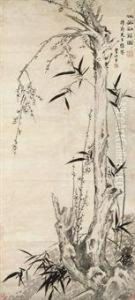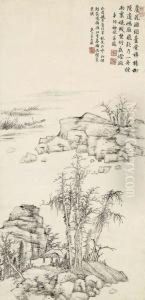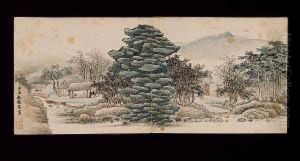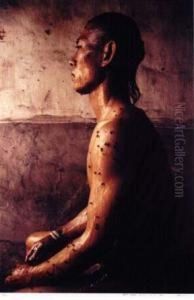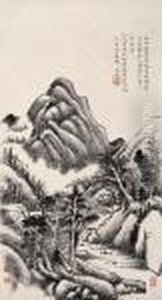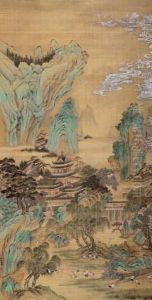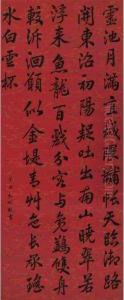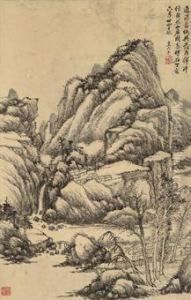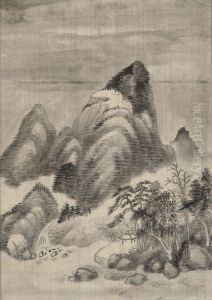Yong Rong Paintings
Yong Rong was a prominent figure in Chinese history, notably recognized for his contributions to literature and art during the Qing dynasty, rather than being a professional artist himself. Born into the royal family, he was the sixth son of the Qianlong Emperor, positioning him in a sphere of influence and cultural patronage that deeply impacted the artistic and intellectual landscapes of his time. His life spanned the mid to late 18th century, a period during which China experienced significant growth and transformation under the Qing dynasty's rule.
Yong Rong's contributions to the arts were multifaceted, reflecting his royal upbringing and the scholarly pursuits encouraged among the elite during his era. He was deeply involved in the compilation and editing of significant literary and historical works, including the participation in the monumental project of the Siku Quanshu, or the Complete Library in the Four Branches of Literature. This project, initiated by his father, the Qianlong Emperor, aimed to compile all known Chinese works on philosophy, history, literature, and the arts. Yong Rong's role in this massive scholarly endeavor illustrates his commitment to preserving and promoting Chinese culture and intellectual heritage.
Despite not being an artist in the conventional sense of creating visual art, Yong Rong's impact on the cultural and artistic domains was profound. His patronage and keen interest in the arts facilitated the flourishing of various artistic expressions during his lifetime. He was known for his refined taste and understanding of calligraphy, painting, and poetry, which were highly esteemed skills among the Chinese literati. His influence extended to the promotion of particular styles and artists, thereby shaping the aesthetic preferences of the Qing court and, by extension, the broader cultural landscape of China during this period.
Yong Rong's legacy is also tied to his position within the Qing dynasty's complex history and the broader narrative of China's cultural evolution. His life reflects the tensions and contradictions of a period marked by both remarkable achievements in the arts and literature and the challenges of governance and external pressures on the Qing dynasty. Through his scholarly and cultural endeavors, Yong Rong contributed to the rich tapestry of Chinese history, leaving behind a legacy that underscores the importance of intellectual and artistic pursuits in shaping the identity and heritage of a nation.
